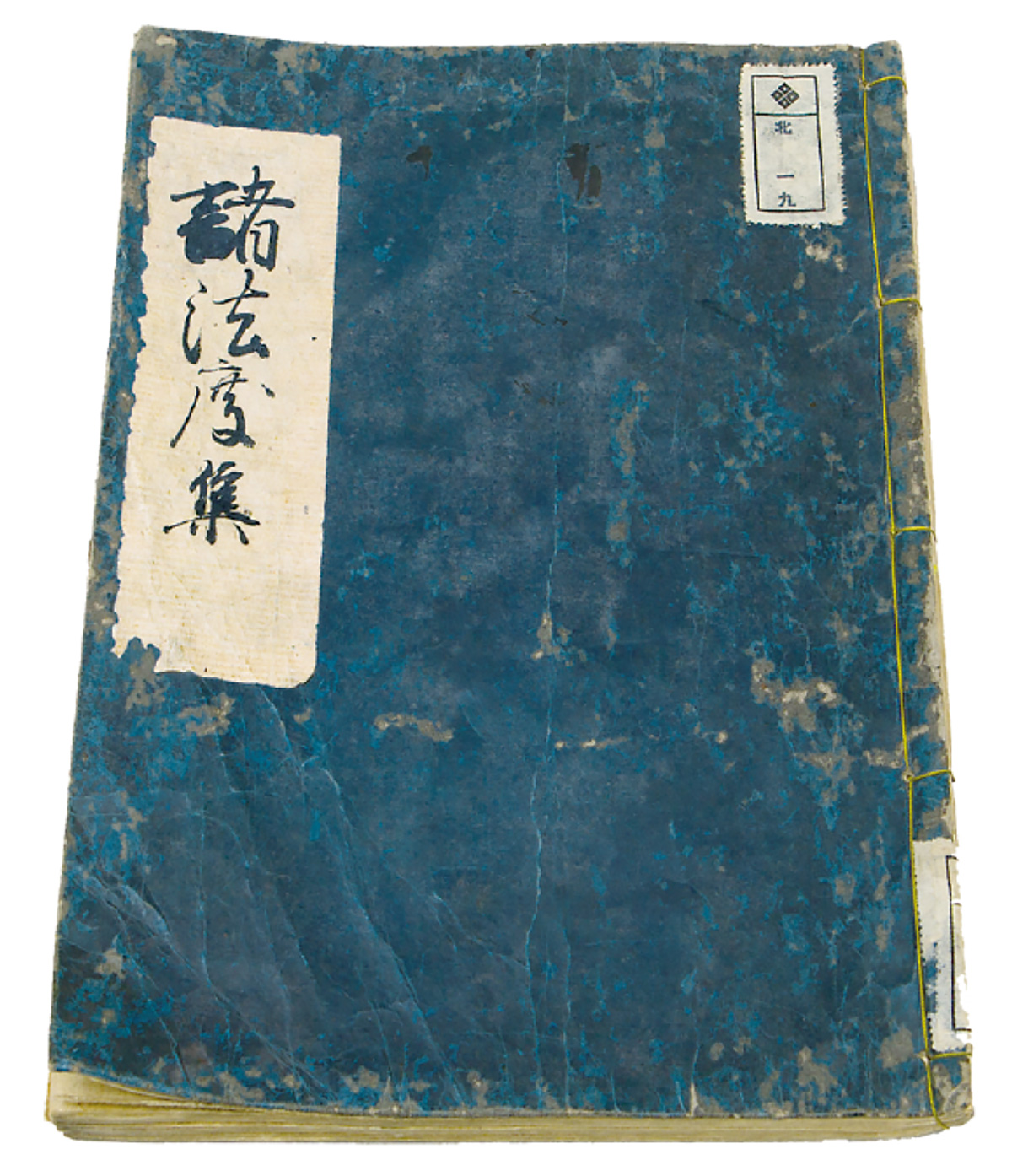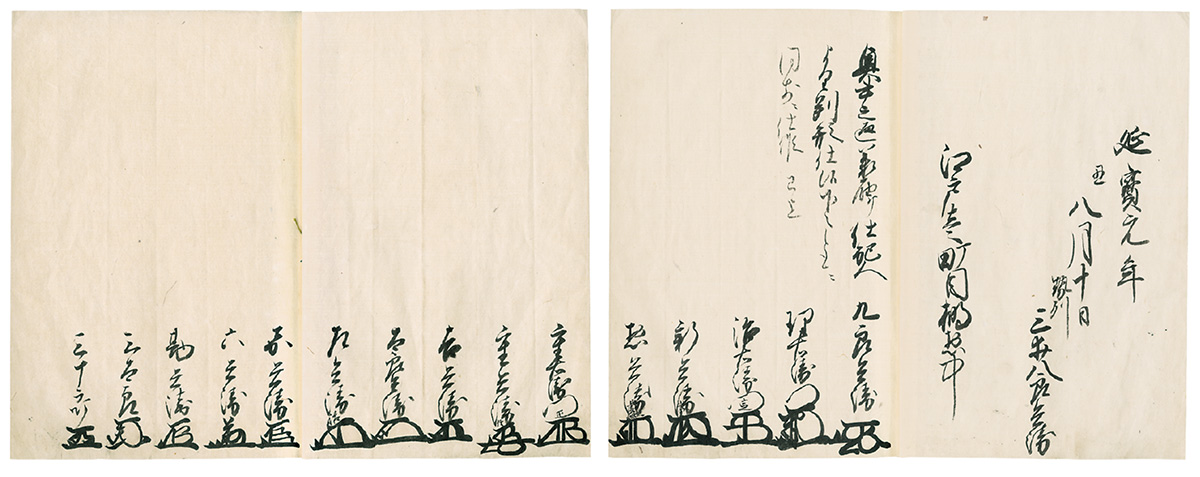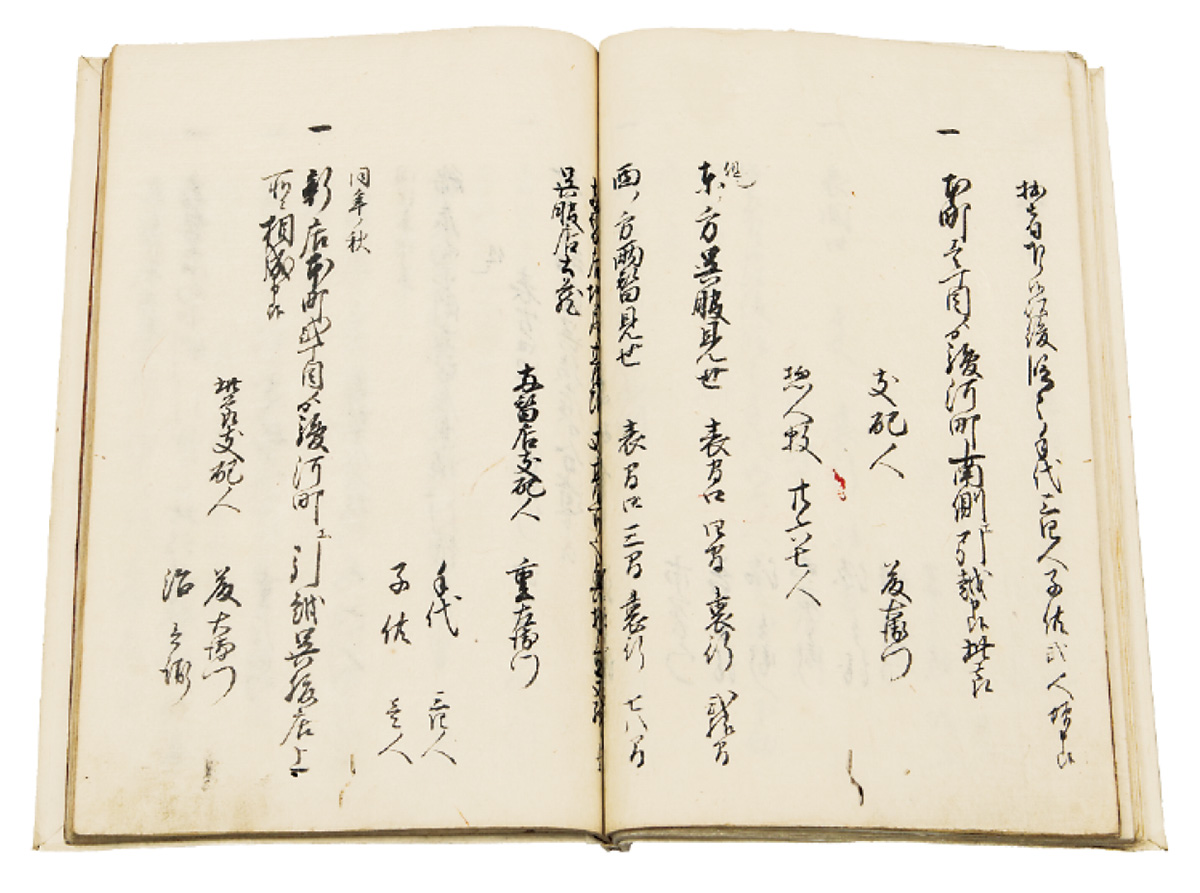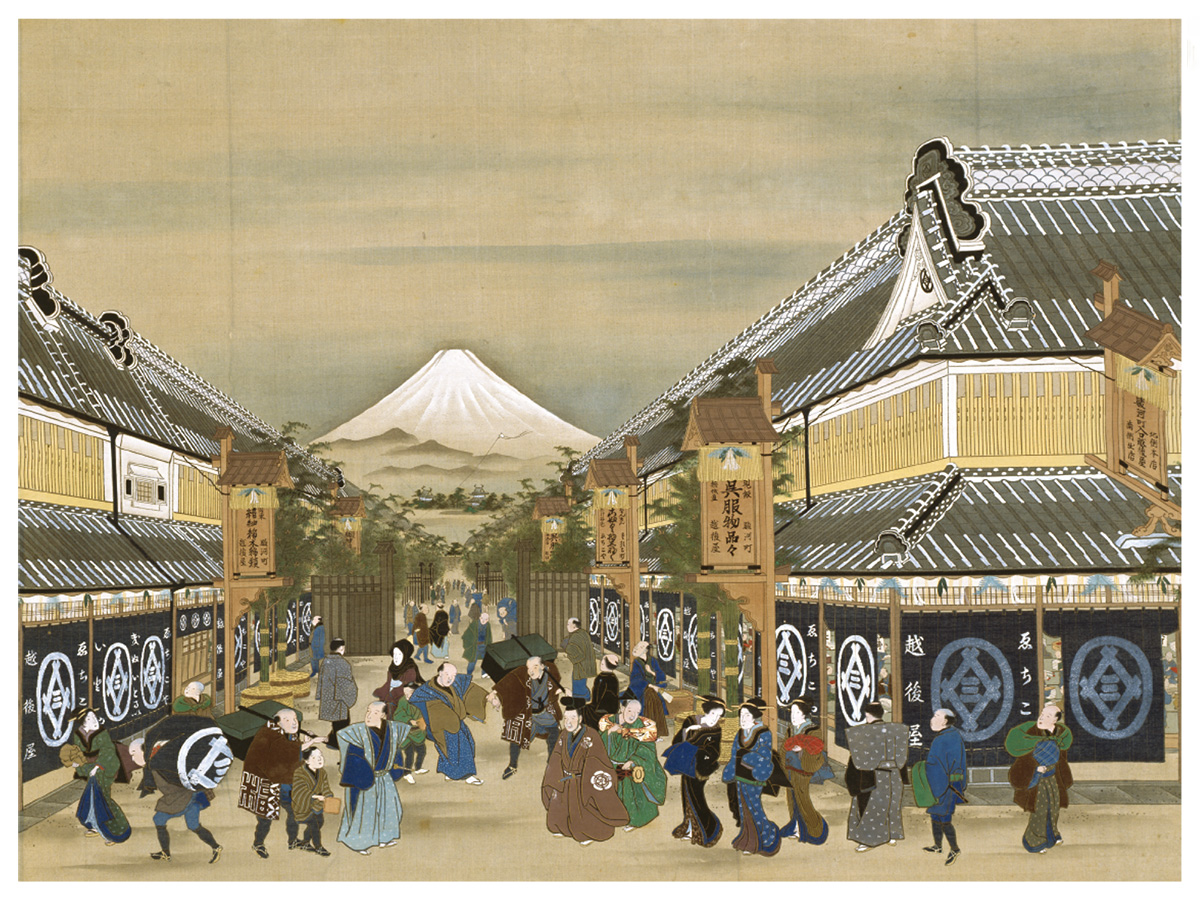03 The Advance into Edo

Takatoshi Opens His Shop
Having built up capital in Matsusaka, Takatoshi made his move into Edo in earnest, beginning sales of gofuku (kimonos) in 1673 when he was 52 years old.
The shop that Takatoshi opened was located in Honcho 1-chome (present day Nihonbashi Hongokucho, Chuo-ku), with a modest frontage of around 2.7 meters. However, his plans were big. He decided that he would also purchase goods directly. He set up a shop for making procurements in Kyoto and assigned his eldest son-the 21-year-old Takahira-to work there full time. In Edo, he posted as employees his second son-the 20-year-old Takatomi-and Riemon, who had been entrusted with his elder brother’s shop and who he had long had his eye on. Takatoshi himself made Matsusaka his base and directed business from there.
Edo and Kyoto
Edo had been a small village during the medieval period. However, it developed rapidly as the home base for the Tokugawa family that had brought all of Japan under its control. Many of the shogun’s vassals along with the wives, children, and retainers of daimyo (feudal lords) from around the country lived there. Furthermore, thanks to the alternate attendance system, daimyo themselves also regularly stayed in Edo. In order to support them with their daily lives, people in commerce and industry likewise moved to Edo and a system was established for transporting vast amounts of goods and commodities to the city. Over the course of the 17th century, Edo grew into one of the largest of the major cities in the world. The Honcho 1-chome district where Takatoshi opened his shop was a historic one that had first been developed by Tokugawa Ieyasu. Merchants from Kyoto and Osaka had long been opening shops there, and Takatoshi’s relatives likewise had theirs there, too.
Takatoshi’s third son Takaharu later recalled in Shobaiki (→04) about Edo around this time that the scale of the business was small but the profits were big.
On the other hand, Kyoto since ancient times had been the center of politics and the economy. Even in Takatoshi’s times, as ever it was at the top when it came to handicrafts and finance. Kimono was an industrial product of the highest quality for its times, bringing together a variety of raw materials and complex processes, and Kyoto was the number one production center.
The Move to Surugacho
Takatoshi’s business was a great success from the start, but it invited a fierce backlash from his fellow tradesmen. In Shobaiki, it is written that Takatoshi was subjected to harassment in the form of a toilet being built facing the kitchen of his shop.
Because of this, in 1683 Takatoshi used the opportunity presented by a major fire the previous year to move his shop to Surugacho (present day Nihonbashi Muromachi, Chuo-ku) (→Fig. 03c). When it came time for the shop to open, customers packed the store and created a great crowd. The relocation was a major success. Shobaiki records, “It had an energy that was like a tiger having been set loose in a field.” This location became the base for Mitsui, which it remains to this day (→Fig. 03d).
Takatoshi’s successes were brought about by numerous business innovations and a new commercial practice.

Shop rules that Takatoshi drafted and issued in Ise Matsusaka when he first opened his own shop in Edo’s Honcho 1-chome district. They have been handed in the Kita family, the Mitsui head family.
It was issued dated August 10, 1673 (Enpo 1), and is a historical record that also serves as evidence that shows the time when the Edo shop was opened. Given that the change of era name to Enpo occurred in September, it may be surmised that the era name was rewritten when it was signed by everyone at the shop and a clean copy made in Edo to be sent to Takatoshi.
The character for collection (rendered as shu) is part of the title because it also includes rules that were issued two more times over the next three years. They record detailed rules, such as a prohibition on selling to samurai on credit, regulations regarding various types of ledger, every aspect of the lives of employees who are living on the premises, and so forth. It is possible to understand from it what the state of business was like immediately after the shop had been opened.
Shohattoshu (Book of rules)

Description
Here we describe a section from the end of Shohattoshu. Dated August 10, 1673, this excerpt has the signature of Takatoshi in Matsusaka, and it is addressed to all of the employees of the shop opened in Edo’s Honcho 1-chome district. Next, it notes that all of the employees from the top manager on down understand the content of what has been passed on to them, and contains everyone’s signature.
There are 15 signatures in all: Kurobe, Riemon, Jiemon, Shinbe (Yukishige), Sobe (Kiso), Juemon, Jube, Kichibe, Tarobe, Sahe, Kahe, Rokube, Kanbe, Santaro, and Sanjuro.
Mitsui would have an enormous presence in the future, but it was about this scale at the start.

“Maru-ni-igetasan” is the Mitsui store logo, a symbol that depicts the Japanese character for “three” in the center of an igeta, which is a rotated square with overlapping bars, all surrounded by a circle. Having achieved success, Takatoshi began to use his own unique logo. It is meant to signify “Mitsui in Edo’s Marunouchi (inside the outer moat of Edo Castle) district,” and is said to have come to Takatoshi in a dream. In the past, it was called the “Izutsu-ni-san” logo. Pictured above is the pattern created from a woodblock used for creating a flyer (→14) in 1736.

It is a history of the Edo shops that Wakita-who was a top manager in Edo during the early years-submitted in 1728 in response to a request from the Omotokata (→10), Mitsui’s central administrative body. It is valuable evidence about the founding period. The image is a section that describes the move to Surugacho. The third line reads, “Manager Toemon.”

A 19th century work, painter unknown. Surugacho, which later would be lined on both sides with Mitsui shops, was one of Edo’s noted places of interest. There was penchant for depicting it as in this painting, with Mt. Fuji and Edo Castle in the background. Today, the Mitsui Main Building stands in this spot on the right side, and the Nihonbashi Mitsukoshi Main Store stands on the right.
